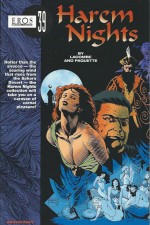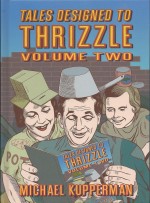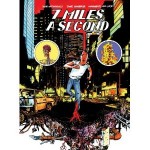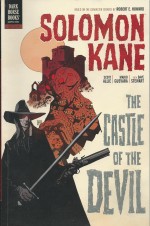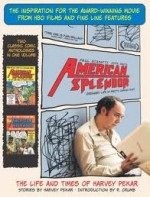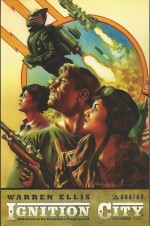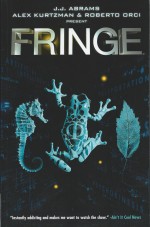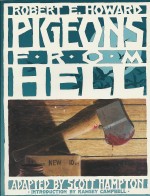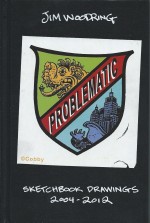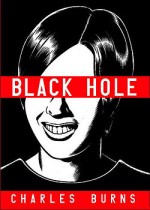
By Charles Burns (JonathanCape)
ISBN: 978-0-22407-778-1
One of the most impressive and justifiably lauded graphic novels ever, Black Hole is a powerfully evocative allegorical horror story about sex, youth and transformation, but don’t let that deter you from reading it. It’s also a clever, moving, chilling and even uplifting tale that displays the bravura mastery of one of the greatest exponents of sequential narrative the English language has ever produced.
Originally released as a 12-issue limited series under the aegis of Kitchen Sink Press, the tale was rescued and completed through Fantagraphics when the pioneering Underground publisher folded in 1999. On completion Black Hole was promptly released in book form by Pantheon Press in 2005, although many fans and critics despaired at the abridged version which left out many of Burns’ most potent full-page character studies of the deeply troubled cast – an error of economy corrected in subsequent editions.
It has won eleven of the comic world’s most prestigious awards.
It’s the 1970s in Seattle, and there’s something very peculiar happening amongst the local teenagers out in the safe secure suburbs. In ‘Biology 101’, Keith Pearson can’t concentrate on properly dissecting his frog because his lab partner is Chris Rhodes, the veritable girl of his dreams.
Trying to keep cool only makes things worse and when he suddenly slips into a fantastic psychedelic daydream the swirling images resolve into a horrific miasma of sex, torn flesh and a sucking void.
Suddenly he’s regaining consciousness on the floor with the entire class standing over him. They’re all laughing at him… all except Chris…
‘Planet Xeno’ is a quiet patch of woodland adults don’t know about, where the kids can kick back, drink, smoke, get stoned and talk. The big topic among the guys is “the bugâ€, a sexually transmitted disease that causes bizarre, unpredictable mutations: uncontrolled growths, extra digits, pigmentation changes, new orifices that don’t bleed…
As Keith and best buds Dee and Todd shoot the breeze and goof off they discover an odd encampment, strewn with old toys and bottles and junk. Some of the sufferers of the “Teen Plague†have relocated here to the forest, founding a makeshift camp away from prying eyes and wagging tongues…
When Keith finds a girl’s shed skin hanging from a bush he fears the creepy mutants are closing in and suffers a crazy disorienting premonition…
Chris is dreaming in ‘SSSSSSSSSS’, a ghastly phantasmagoria that involves naked swimming in pollution, a load of strange guys, monsters and that fainting kid Keith turning into a serpent. It all ends with her examining the new holes in her body before ripping off her old skin and leaving it hanging on a bush…
She’s drinking illicit beer by the lake in ‘Racing Towards Something’, remembering that wild party a week ago and what she did with the cool guy Rob Facincanni. As she came on to him he kept trying to tell her something but she was in no mood to listen. She just didn’t want to be the good girl anymore…
She then recalls the moment of explosive climax and horror when she discovered the hideous second mouth in his neck and the noises. It seemed to be speaking…
In the sordid guilty aftermath she felt awful but had no idea what that furtive, disappointing assignation had done to her…
Rob is still sleeping with Lisa. She’s accepted the cost of the curse and the ghastly changes in her body but what she won’t take is him screwing around. She has heard Rob’s second mouth talking as they lay together and needs to know ‘Who’s Chris?’
Keith and his friends are getting stoned again when he hears that some guys have just watched the so-virginal Chris skinny-dipping and seen her sex-caused mutation. The virgin queen isn’t any more…
In ‘Cut’ their teasing proves too much and he storms off into the scrub and accidentally spots the object of his desire getting dressed again. Guiltily voyeuristic, he’s prompted to action when she steps on broken glass and cries out.
Dashing to her rescue he bandages her foot, too ashamed to admit just how much of her he’s really seen. All Keith knows is that someday he will be with her. Fate was obviously on his side…
‘Bag Action’ finds him and Dee trying to buy weed from a bunch of skeevy college guys, but the frustrated romantic is utterly unable to get lascivious, furtive, distracting naked images of Chris out of his mind.
However, after sampling some of the dope in the Frat boys’ dilapidated house, he meets their housemate Eliza, an eccentric artist extremely high, nearly naked and very hungry…
Just as baked, achingly horny and fascinated by her cute tail (not a euphemism), Keith almost has sex with her but is interrupted by his idiot pal at just the wrong moment…
Many of those infected by The Bug have camped out in the woods now and ‘Cook Out’ finds them having a desperate party around a roaring fire. Rob is there, bemoaning the fact that Lisa has kicked him out but he’s also acutely aware that the sex-warped kids are getting oddly wild, manic, even dangerous…
‘Seeing Double’ finds the devastated Chris talking things over with Rob at the outcast’s encampment. The naive fool has just discovered what’s she got and what it means. Lost and disgusted, convinced that she’s a dirty monster with a biological Scarlet Letter that is part of her flesh she drinks and talks and, eventually, finds comfort in her bad boy’s arms…
In ‘Windowpane’ Pearson, Dee and Todd drop their first tabs of acid and head for a party at Jill‘s house. The increasingly morose and troubled Keith is feeling ever more isolated and alienated and the LSD coursing through his system isn’t helping, When Dee and Jill start to make out, he leaves and finds her big sister crying outside. After she shouts at him he turns and, still tripping off his nut, heads into the woods.
Lost and confused, he sees horrific and bizarre things in the trees and bushes before stumbling into some of the infected kids around their fire. In a wave of expiation he begins to talk and keeps on going, slowly coming down amongst temporary friends. Keith has no suspicion that some of the things he saw were not imaginary at all…
‘Under Open Skies’ finds Chris and Rob playing hooky. Fully committed to each other now, they head to the coast and a perfect solitary day of love at the beach. They think it’s all going to be okay but the voice from Rob’s other mouth tells them otherwise…
Back home again, Chris’ recent good times are ruined by her parents’ reaction. Grounded, the former good girl makes up her mind and, gathering a few possessions, elopes with her lover to a new life in ‘The Woods’ where the grotesquely bestial but kindly Dave Barnes takes them under his wing.
Although they have bonded, Rob cannot stay with Chris but returns to his home and High School. Although he spends as much time as he can at the encampment, Chris is too often alone and on one of her excursions into the wilds finds a bizarre and frightening shrine.
Little does she know it’s one of the things the tripping Keith thought he had hallucinated…
Summer moves on and Pearson plucks up the nerve to go back to the college guys’ house. ‘Lizard Queen’ Eliza is on the porch, drawing but obviously upset by something. Confused, scared and without knowing what they’re doing they end up in bed, consummating that long-postponed act of drug-fuelled passion…
Chris’ days of innocent passion end suddenly when Rob is horrifically attacked by a lurking intruder in ‘I’m Sorry’ and she descends into a stupor for days until she spots nice safe Keith at one of the camp’s evening bonfire parties. Soon he’s arranged for her to move into an empty property he’s housesitting for ‘Summer Vacation’ but even though he’s attentive, kind, solicitous and so clearly wants to be with her, he’s just not Rob.
Chris has been going slowly crazy since her beloved boy vanished: reliving memories good and bad, feeling scared and abandoned, playing dangerously with the gun he left her “for protectionâ€â€¦
Keith is still plagued by nightmares and X-rated thoughts of Eliza in ‘A Dream Girl’ but hopeful that he has a chance with Chris, now. That swiftly changes when he checks on her and discovers that the house he’s supposed to be guarding has been trashed. There’s garbage everywhere, a bunch of her fellow outcasts have moved in and she’s clearly avoiding him, locked in a room, constantly “sleepingâ€â€¦
Despondent and confused, Pearson doesn’t know what to do. Chris is having some kind of breakdown and the house – his responsibility – is a wreck. The lovesick fool is trapped and crumbling when Eliza breezes back into his life. If only his own bug mutation wasn’t so hideous…
Heading back to the home once more he finds that Chris has gone and the pigsty has become a charnel house…
Throughout the summer there has been a frightening, oppressive presence in the woods and with the Fall coming the mood is beginning to darken. When Dave is barracked and abused whilst trying to buy takeout food he snaps and pulls out Chris’ gun. Calmly taking his fried chicken from the crime-scene he walks back to the woods and the troubled soul known as ‘Rick the Dick’. It’s going to be their last meal…
Keith meanwhile has found his own happy ending ‘Driving South’ with the gloriously free and undemanding Eliza, but is still focussed on what he found at the house. At least he and Eliza helped the survivors get away, but now happily content with his idyllic artist girl and after all the horrible secrets they’ve shared, he can’t help wondering what happened to Chris…
That mystery and how Dave got the gun are only revealed in the compulsively low key and wildly visual climax of ‘The End’…
Complex, convoluted and utterly compelling, expressive, evocative and deeply, disturbingly phantasmagorical, Black Hole is a genuine comics masterpiece which applies graphic genius and astoundingly utilises allegory, metaphor, the dissatisfaction and alienation of youth, evolution and cultural ostracization as well as the eternal verities of love, aspiration, jealousy and death to concoct a tale no other medium could (although perhaps Luis Buñuel, David Lynch or David Cronenberg might have made a good go of it in film).
If you are over 16 and haven’t read it, do – and soon.
© 2005 Charles Burns. All rights reserved.

